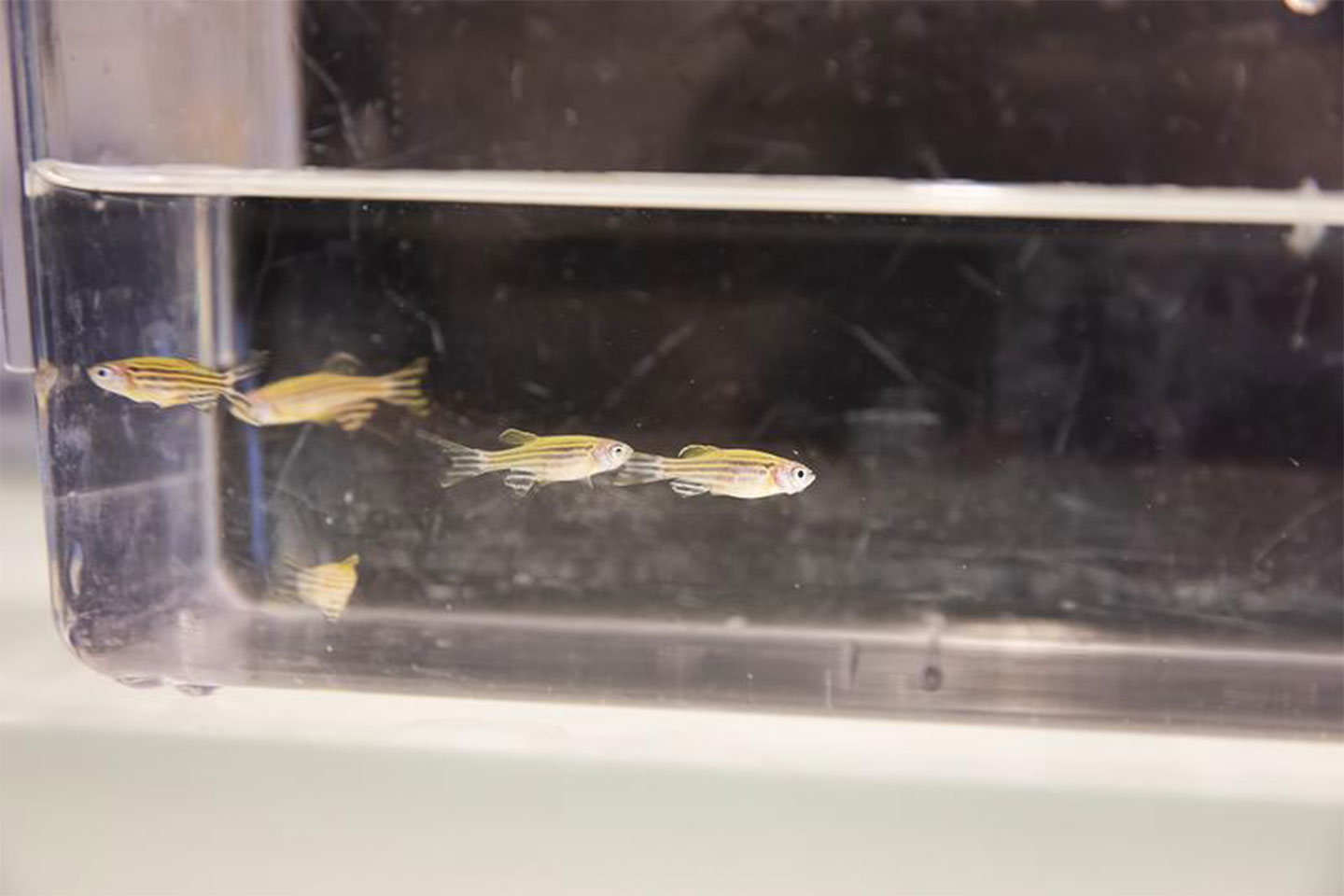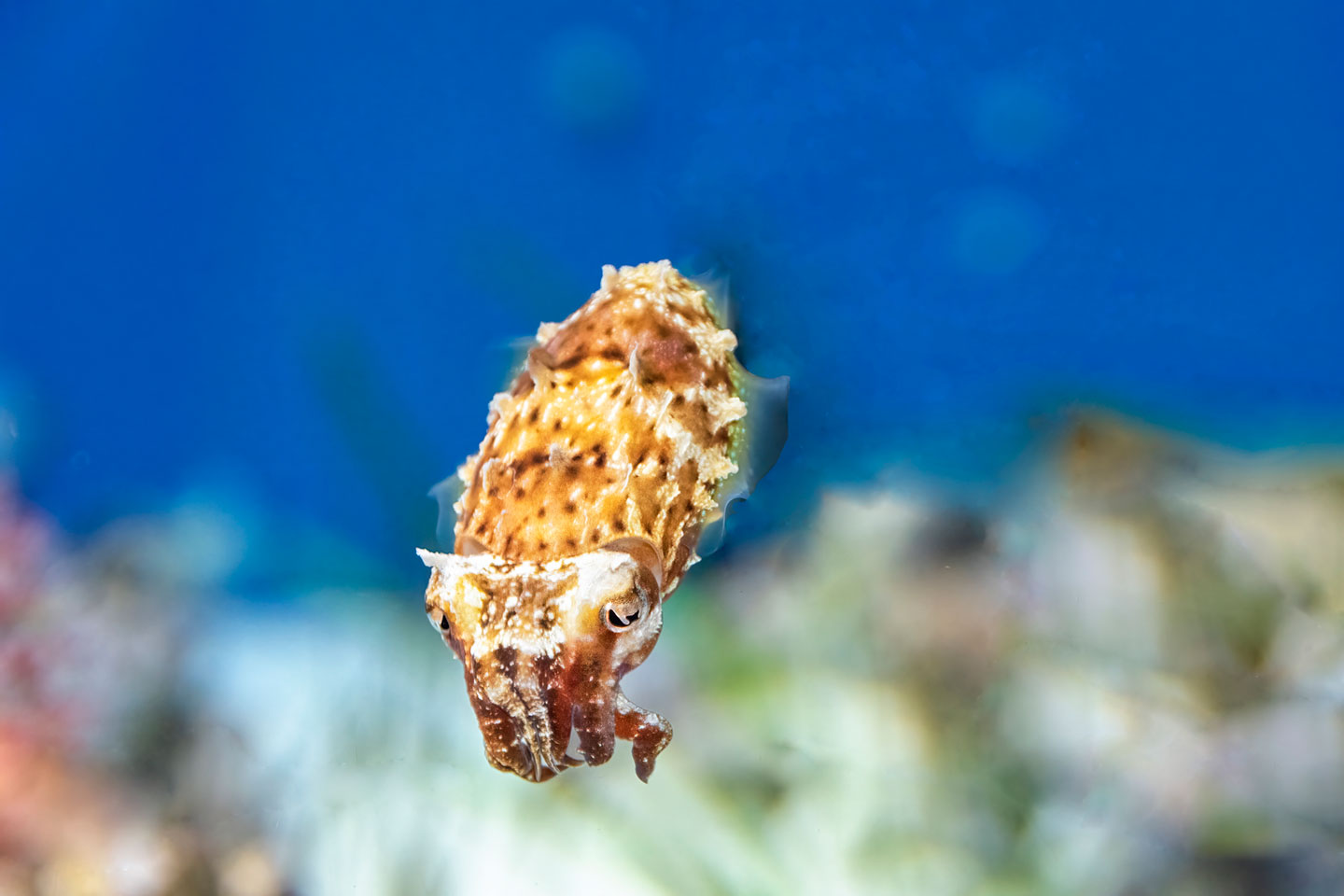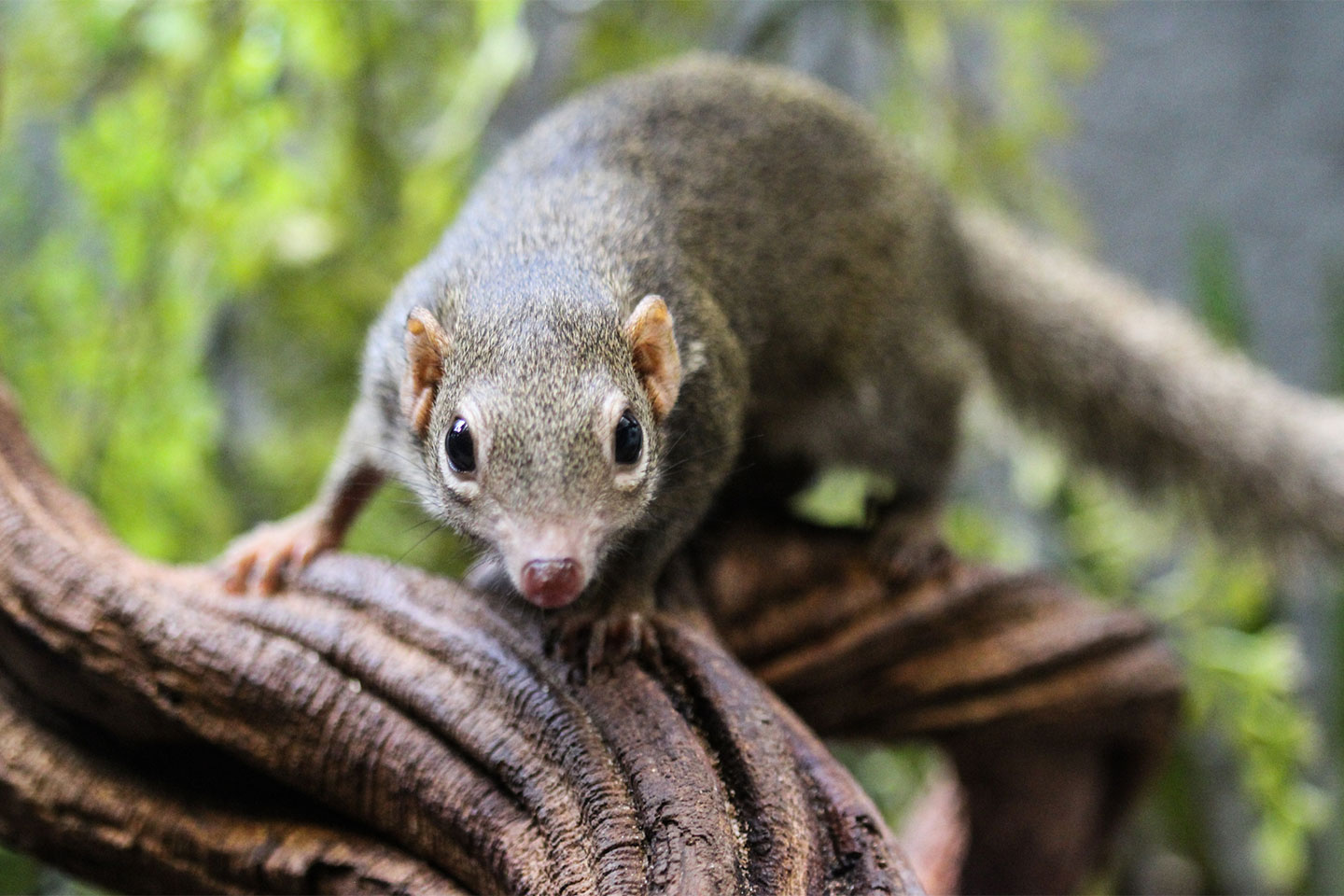Research involving other species
At the University of Fribourg, animal experimentation also concerns other species such as zebrafish, cephalopods and tupaias.
Why Zebrafish
Zebrafish are a model organism regularly used in research on development, because they are transparent, and therefore the development can be followed live. At our University, however, zebrafish are used to study regeneration. Indeed, Zebrafish are capable or regenerating many of their organs after injury. In particular, our scientists study the regeneration of appendages, heart and retinas. The long-term objective of this work is to understand which mechanisms allow zebrafish to regenerate, so that this could be potentially used in future medical treatments.
About Zebrafish
Zebrafish, Danio rerio, are a small fish native to the rivers of south Asia. They are very common aquarium fish. They are about 2 to 4 centimetres long and have multiple dark blue lines on their body, hence their name. Zebrafish are very commonly used in laboratory, and their genes are well known. It is fairly easy to make genetic modifications in zebrafish. Thus, many of the fish used in the laboratory have genetic changes that allow better studying of the function of certain genes/cell types. For example, multiple fish have been genetically modified to have fluorescent blood vessels, or bones, or hearts. This allows to see the process of regeneration of these tissues in living animals.
Why Cephalopods
Cephalopods are a relatively new model in research. Indeed, these animals have caught our attention due to their exceptional cognitive abilities. Even though they are developmentally far away from mammals, who are consider as one of the most intelligent species on the planet, cephalopods were been able to reach similar skills. In fact, these molluscs can solve complex problems, learn by observing, use tools among other surprising skills such a changing pattern in unilateral ways.
At the University of Fribourg, we want to understand how these animals managed their developmental success through better understanding the neuronal, and molecular mechanisms underlying their phenomenal cognitive abilities. We also aim to improve their animal welfare under laboratory conditions. In the long term, it will be critical to understand the basic mechanism of memory.
About Sepia bandensis
Sepia bandensis or dwarf cuttlefish is originally of the coast of Indonesia, Philippines and Australia, they live in small groups. These animals are known to possess complex nervous system allowing a wide range of learning and cognitive behaviors. As adult, they can reach up to 7cm and they can display a palette of black and brown colors, their sexual maturity is reached around the 4th month.
Why Tupaias
Tupaias (Tree shrews) have many advantages as model organisms in neuroscience. They can serve as a bridge between rodent and primate studies, allowing species-specific aspects as well as general principles to be highlighted. Typically, their smooth brain and their highly developed visual system close to that of primates make them ideal for studying therapeutical approaches to restore vision following damages. Their relatively short gestation (40-52 days) and immaturity at birth make them ideal for developmental studies. Their cleverness, their relatively large hippocampus and their versatile movements make them interesting organisms for the study of learning and spatial processing. Their vocalizations, interactions and tendency to loneliness are favourable to study social as well as self-centred behaviours.
About Tupaias
Tree shrews are evolutionarily close to primates. They are similar in size and appearance to squirrels; however, unlike rodents, they are diurnal. Their fur is dark brown to red, they have a pointed snout, a bushy tail, small ears and medium-sized eyes placed laterally, fingers that have long sharp claws allowing them to climb. They are prey animals (snakes, birds of prey and small carnivores), feeding on insects, fruits and leaves. Their longevity is 2-3 years in the wild and 12 years in captivity. There are many subspecies of Tupaias in Southeast Asia; the Freiburger tree shrew colony is composed of Tupaia Belangeri.



